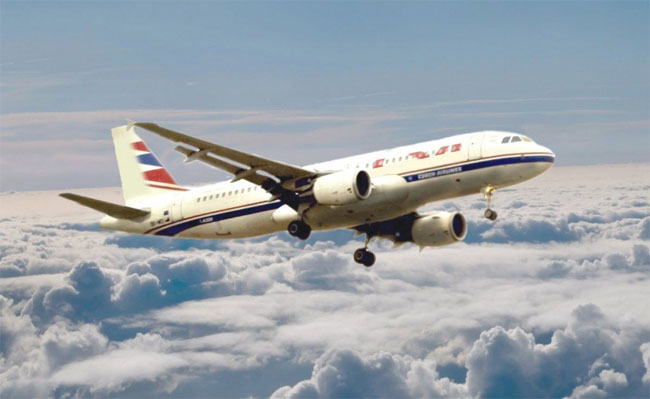The reason the plane is flying higher than the Everest peak
How high a plane is flying has its own reason. And the answer will probably surprise you.
Have you ever wondered why the plane needs to fly so high? Isn't it just enough that the plane flies higher than the building is enough?
Why does the plane have to fly to a height of more than 35,000 feet? The answer will probably surprise you.
According to Peter Terry, a pilot with 30 years of experience, " The optimal height depends on the weight of each aircraft. Concorde aircraft also fly at 50,000 - 60,000 feet (about 15,300m - 18,200m). "The heavier aircraft will fly at lower altitudes."
Currently, most commercial aircraft fly at an altitude of nearly 10,000 meters - more than Mount Everest for the following main reasons:
1. Fuel economy

The higher the air, the more dilute the air is, so the force of lifting the wing wings and the friction force decreases.
Air Canada's Doug Morris said: "The general rule is that the higher the better, the less diluted air creates less resistance."
The higher the air, the more dilute the air is, so the force of lifting the wing wings and the friction force decreases. Moreover, airplanes are also less affected by air, so they will fly faster. Thus, the aircraft will reduce the energy needed to consume, use less fuel for travel.
In particular, air-powered jets are more productive because they are more abundant in air at an altitude of over 30,000 feet (about 9,000m). This is also the reason for airlines, especially low-cost airlines, to use jet aircraft.
2. Avoid the influence of weather
At an altitude of about 35,000 feet, which is on the troposphere of the atmosphere, the atmosphere is more stable. Aircraft often do not have to worry about interference, or are affected by weather-related phenomena such as rain, strong winds or thunderstorms.
Although the aircraft can still fly through the storm, it will be difficult and meet many uncertainties. To ensure absolute safety for passengers, aircraft should still avoid these weather phenomena.
3. Avoid the obstacles

At an altitude of about 10,000 meters, aircraft can avoid colliding with birds.
Avoiding towering infrastructure on the ground is a clear thing. However, at an altitude of about 10,000 meters, aircraft can avoid colliding with birds or avoiding birds getting caught in aircraft engines.
There have been many cases of incidents when aircraft and birds accidentally collided with each other.
For example, the US Airways flight 1549 on January 15, 2009 suddenly landed in the Hudson River just minutes after taking off from LaGuardia Airport (New York) due to a flock of birds.
4. Safe landing in an emergency
A normal flight, the landing is not worth mentioning at all. But if unfortunately, the plane has trouble needing to land, before landing, the pilot also has a time to find solutions and find a safe landing place. Also, don't let the plane slow down or fall too fast.
There is no maximum flight altitude for aircraft. The record height of a jet is 123,520 feet (about 37,000m), piloted by pilot Alexandr Fedotov in 1997.
Light aircraft often fly at lower altitudes. Aviation agencies around the world, including the British Civil Aviation Authority (CAA) and the US Federal Aviation Administration, all have the lowest safety height of 1,000 feet (304m) compared to fixed objects. Highest in the flight area.
- Video: The collision created the Everest
- NASA misplaced Everest on India
- Nepal calls for help measuring Everest height
- According to this measure, Everest is not the highest mountain in the world
- The UFO suddenly appeared at Mount Everest, making science a headache
- 'Death Threshold' on Everest: The untold story of the 5 greatest climbing legend in history
- The factors that make Everest the dead end of the climbers
- Mountain on Mars is higher than Mount Everest
- Mount Everest changed its height because of the earthquake in Nepal
- Video: Snowfall moment buried in Mount Everest camp
- Why does the plane have to fly higher than Mount Everest?
- Human health becomes meaningless at the top of Everest's roof
 'Fine laughs' - Scary and painful torture in ancient times
'Fine laughs' - Scary and painful torture in ancient times The sequence of numbers 142857 of the Egyptian pyramids is known as the strangest number in the world - Why?
The sequence of numbers 142857 of the Egyptian pyramids is known as the strangest number in the world - Why? Miracle behind the world's largest stone Buddha statue
Miracle behind the world's largest stone Buddha statue What is alum?
What is alum?